
A few days ago we covered the story of Lakhwinder Kahlon – a father who was sentenced to life for the murder of his two-year-old daughter in B.C., Canada. Along the same lines we are hearing news about Moninder Singh Pandher who today was convicted of murdering a young girl, the first verdict in a case involving the deaths of 19 people. Pandher and his servant Surinder Koli were arrested last year after body parts were found near their home in Delhi. Most of the victims were children who had dissapeared in the area in years prior. Pandher and Koli were charged with murder, rape and abduction.
Residents say as many as 40 children disappeared in the area over two years before the crime came to light in December 2006.
The killings horrified people in India and the businessman’s Noida home was dubbed the “house of horrors”. The remains of the children were found hidden in bags. [link]
The crime shocked the country and many blamed incompetent police. Local residents said police failed to act over the abductions and murders because many of those reported missing came from poor families. A BBC article discusses this in more detail,
The UN Special Rapporteur for freedom of religion or belief visited India last year and just released her report on the country, highlighting, amo ng other things 2 matters that are of special concern to Sikhs: (1) the situation of religious or belief minorities (generally) and (2) justice for victims and survivors of communal violence (including Operation Bluestar in particular).
ng other things 2 matters that are of special concern to Sikhs: (1) the situation of religious or belief minorities (generally) and (2) justice for victims and survivors of communal violence (including Operation Bluestar in particular).
This report will serve as a great tool for future advocacy and education campaigns, as the UN Special Rapporteur is by mandate, an independent entity (though also a diplomatic entity whose mandate is funded by the States she monitors, so of course there are limits to what can be said and done). The office is also a widely respected authority, whose reports are persuasive and create pressure in courts and government offices. Having official international support and recognition of issues that have long been a struggle for Sikh activists to legitimate (lack of accountability, lack of compensation) should advance the Sikh movement to hold accountable Indian government authorities identified as responsible for innocent civilian deaths. Between this report, and the recently released Ensaaf report, 2009 looks like it’s going to be a good year for advancing accountability for crimes by Indian authorities against Sikhs in the 80s and 90s.
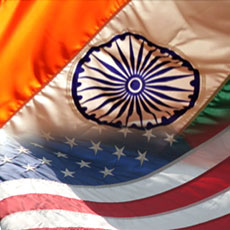 In 2006, Professors John Mearsheimer (University of Chicago) and Stephen Walt (Harvard) published a book titled The Israel Lobby and US Foreign Policy. In the book, Mearsheimer and Walt raise the following point – that since 1967, America’s relationship with Israel has been the centerpiece of its Middle East foreign policy.
In 2006, Professors John Mearsheimer (University of Chicago) and Stephen Walt (Harvard) published a book titled The Israel Lobby and US Foreign Policy. In the book, Mearsheimer and Walt raise the following point – that since 1967, America’s relationship with Israel has been the centerpiece of its Middle East foreign policy.
They then ask the question:
Why has the US been willing to set aside its own security and that of many of its allies in order to advance the interests of another state? One might assume that the bond between the two countries was based on shared strategic interests or compelling moral imperatives, but neither explanation can account for the remarkable level of material and diplomatic support that the US provides…. So if neither strategic nor moral arguments can account for America’s support for Israel, how are we to explain it?[link]
The answer:
The explanation is the unmatched power of the Israel Lobby. We use ‘the Lobby’ as shorthand for the loose coalition of individuals and organisations who actively work to steer US foreign policy in a pro-Israel direction. This is not meant to suggest that ‘the Lobby’ is a unified movement with a central leadership, or that individuals within it do not disagree on certain issues. Not all Jewish Americans are part of the Lobby, because Israel is not a salient issue for many of them. In a 2004 survey, for example, roughly 36 per cent of American Jews said they were either ‘not very’ or ‘not at all’ emotionally attached to Israel.[link]
While the Israeli Lobby remains one of the most powerful groups in Washington DC, there is a rising group in town – the India Lobby. Sometimes I am shocked by the naivety of Sikh-Americans that have NO understanding of the power of the Indian lobby. They are generally completely ignorant of the vast prestige and increasing power of this group. (Then of course, there is the other extreme that believe ‘agents’ lurk around every corner and never hesitate to call anyone that disagrees with them, a ‘sarkari agent.’)
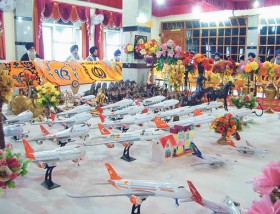 Stuck in Punjab? Want to go abroad? Just buy an airplane.
Stuck in Punjab? Want to go abroad? Just buy an airplane.
Not a real one of course, that would be silly. A toy plane will do. Buy one, donate it to a gurdwara and wait. All your vilaiti dreams will soon come true. If you think I’m pulling your leg, just ask the people at Tihan gurdwara near Jalandhar. They’ll tell you it works.
In the realm of “truth stranger than fiction”, here’s an absurd story that simultaneously highlights how desperate people are to move abroad and how fantastical they imagine living in the West to be.
Who are the smartest guys in this whole tragi-comedy? The guys who’ve set-up shop outside the gurdwara to sell, yep, toy airplanes.
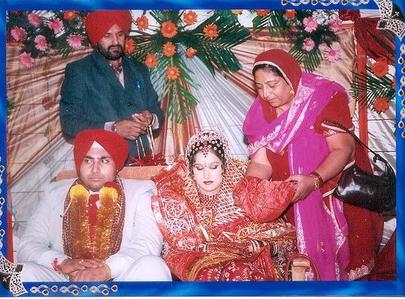
Pawandeep holds a framed photo of her sister. In the photo, Amandeep is wearing a pink salwar-kameez, a Punjabi dress. “She dreamed of a better life for herself and her family. All she wanted was to live happily with her husband and son like any other woman.”
I don’t even know where to begin with this story. The grisly facts of Amandeep Kaur Dhillon’s murder and her father-in-law’s arrest have been covered before, but this weekend, the Toronto Star’s Raveena Aulakh wrote a detailed story. You can read the full article here and it will break your heart, not just because of Amandeep Kaur’s tragic story, but because her story is all too common in our community.
Baldev Mutta knows the stories of immigrant women all too well.
The executive director of the Punjabi Community Health Centre in Brampton says hundreds of young Punjabi brides arrive in Canada every year. Many have arranged marriages. “They don’t know anyone, don’t have any support system and battle pressures most people can’t even imagine exist,” he said.
In the Punjabi culture, men are raised to be dominant while women are expected to be subservient. “The level of thinking of men in the Punjabi community leaves a lot to be desired,” said Mutta, a Punjabi himself. Mutta, who runs programs at four Sikh temples in Brampton, Rexdale, Malton and Oakville, and hosts a radio show, wishes he had been able to reach Amandeep.
Some women are so isolated that they are not allowed to have any communication even with their parents, said Kripa Sekhar, executive director of the South Asian Women’s Centre on Lansdowne Ave. in Toronto. “There are times when we get emails or phone calls from a woman’s family saying they haven’t heard from her ever since she came to Canada, can we check on her,” says Sekhar.In some cases women, bruised and beaten, have been locked up in their homes, not allowed to make or receive any calls. “It’s a problem women face everywhere, but what is unique among South Asians is that we don’t acknowledge it or want to talk about it.”
We can deny it all we want but here’s the sad reality for many (not all) Punjabi families:
(more…)
One Afghani woman has had enough. And her story has struck a chord with many Indian woman who are now supporting her struggle to hold accountable an Indian Army doctor who married and abandoned her in Kabul after three weeks of marriage. Major Pant eventually called her, after returning to India, to tell her he was already married and had two children.
Twenty-year-old Sabra Ahmadzai finished her final high school test in Afghanistan, took out a bank loan and then flew to India on the last day of November. She came to look for an Indian army doctor who she said had deceived, married and then abandoned her in Kabul, making her an object of shame and ridicule.
In India, Ahmadzai’s journey has become a rallying point for young women across college campuses who find in her a source of inspiration to question powerful hierarchies of traditional societies. The students in three universities in the capital are trying to set up a “Justice Committee for Sabra” by enlisting eminent lawyers, retired judges, professors and independent activists. [Washington Post] (emphasis added).
She had been pressured by her family and community to marry Major Pant who had been stationed in the medical hospital in Kabul. He was twice her age. Pant approached her family three times with marriage proposals. When her mother turned him away for not being Muslim, he returned with a priest who would convert him to Islam.
“I did not love him. He was my boss and twice my age. But the elders and the priest said, ‘We have given our word and cannot take it back,’ ” she recalled. “He had won their hearts by treating sick children of my relatives, too. They liked him. I followed their wishes obediently.” [Washington Post]
What’s striking are the layers of abuse that Ahmadzai is fighting against- from the marriage coerced by her community to a man twice her age, her battle to hold accountable an Indian army doctor for his lies and manipulation, to the stigma imposed on her as an abandoned bride. Ahmadzai has responded to the stigma by confronting the doctor who manipulated her. I’d be curious to know how she feels about the pressures from her own community, which journalists haven’t questioned her about. For now, Ahmadzai is at least confronting the Indian army doctor to regain, or perhaps gain for the first time, power and control over her own life.
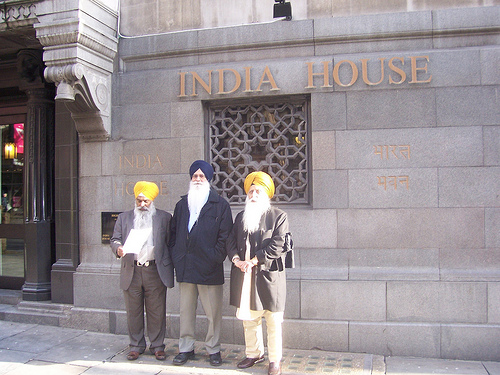 In the previous post, I had summarized a Stratfor report on the strong possibility of an Indian strike on Pakistan. Some Sikh groups in the UK, recently, released a formal appeal asking the Indian government to remove Indian nukes from the Punjab territory. Additional copies were given to the Pakistani embassy as well as the UN Security Council through the French Embassy. These Sikh groups have correctly surmised that East Punjab’s geography places it on the frontline of any conflict between India and Pakistan.
In the previous post, I had summarized a Stratfor report on the strong possibility of an Indian strike on Pakistan. Some Sikh groups in the UK, recently, released a formal appeal asking the Indian government to remove Indian nukes from the Punjab territory. Additional copies were given to the Pakistani embassy as well as the UN Security Council through the French Embassy. These Sikh groups have correctly surmised that East Punjab’s geography places it on the frontline of any conflict between India and Pakistan.
While news of the appeal has been reported in some Sikh media outlets, it is interesting that the mainstream Pakistani press has also picked up the report. The influential English-language Dawn writes:
The Sikhs maintain that they are not a party to the Indo-Pak dispute and, as non-combatants in the event of a war between the nuclear rivals, their population centre and homeland should not face what military experts have said is the likely outcome – a theatre of war in Punjab which becomes a nuclear conflict causing horrific casualties on a massive scale.[link]
Monday marked notable achievements in the human rights world, for Sikhs affected by the Indian government’s abuses in Punjab in the 80s and 90s, as well as in the arena of international criminal justice.
First, Ensaaf recently partnered with Benetech, a technology organization that has created data analysis software to measure whether documented human rights abuses occurred on a systematic, widespread scale or whether they were arbitrary. On Monday, Ensaaf and Benetech’s Human Rights Data Analysis Group (HRDAG) released their findings.
The report by Ensaaf and HRDAG, Violent Deaths and Enforced Disappearances During the Counterinsurgency in Punjab, India, presents empirical findings suggesting that the intensification of counterinsurgen
cy operations in Punjab in the early 1990s was accompanied by a shift in state violence from targeted lethal human rights violations to systematic enforced disappearances and extrajudicial executions, accompanied by mass “illegal cremations.” Indian security officials have dismissed claims of human rights violations as unavoidable “aberrations” during the counterinsurgency against alleged terrorists in Punjab from 1984 to 1995.
“This report challenges explanations by Indian security forces for enforced disappearances and extrajudicial executions using more than 20,000 records from independent sources which have been analyzed using statistical methods,” said Romesh Silva, a demographer at HRDAG and co-author of the report. “This scientific analysis reveals that answers given by the government regarding the nature and extent of these violations are implausible given the available evidence. The victims and their families have a right to the truth.” [ensaaf]
It’s been a long time coming but Sikhs all across the globe seem to be making more of an effort to celebrate Lohri today, not only for their sons but also for their daughters. In Tarn Taran, Punjab, this year’s Lohri’s celebrations were dedicated to the 101 baby girls who live in the area.
“The main purpose of this celebration is to make people aware of the social evil of female foeticide. The male and female ratio is getting unbalanced with each passing day. In order to balance the gap in the Sikh society, Akal Takht has given order not to support female infanticide. Female foeticide is as bad as slaughtering a holy cow,” said Parvinder Singh. Chairman, Kalpana Chawla Pragtisheel Society.
::
Also in the news today is the story of Lak[h]winder Singh, a Giani in Kelowna, Canada who was arrested and is being charged for sexual exploitation, sexual interference, two counts of sexual assault and one count of assault. The allegations that give rise to the sexual offences began in late 2007 and the victim is now 16 years old.
Lakwinder Singh, the 29-year-old preacher at a Rutland temple, Gurdwara Guru Amandas Darbar, was arrested after a family with ties to the temple brought forward allegations of sexual impropriety to police last week.
Tarsem Singh, a spokesman for the Gurdwara, said Lakwinder Singh was employed at their temple for nearly seven years, but has since been fired. In addition, the gurdwara is supporting the police’s efforts in finding any other possible victims.
The dance continues. India’s infamous Central Bureau of Investigation just made a trip to the US to record testimony from two witnesses who identified Jagdish Tytler as an organizer of three days of violence in 1984 against Sikhs in Delhi.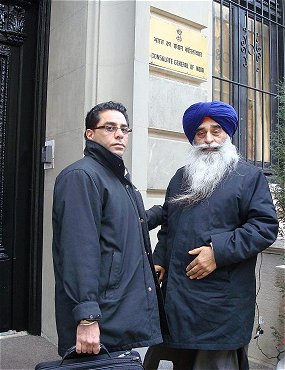
A team from India’s Central Bureau of Investigation came to the U.S. Dec. 22-26 to take testimony from two key witnesses who allege that former Union Minister Jagdish Tytler organized three days of violence against Sikhs in New Delhi 1984, following the assassination of Prime Minister Indira Gandhi. [India West]
Jasbir Singh, one of the men whose testimony was taken, was a witness before the Nanavati Commission in 2004. The Nanavati Commission found that there was sufficient evidence against Tytler to open an investigation against Tytler. However, the CBI closed the investigation last year claiming that it couldn’t find the witnesses.
The Nanavati Commission concluded that sufficient evidence against Tytler existed to launch an investigation. The CBI had closed the case against Tytler — still a prominent member of the Congress party — last September, saying it could not find the witnesses. It reopened the case after several media reported that Jasbir Singh was residing in Fremont, Calif. [India West]
Co-blogged by Phulkari and Sundari
 Perhaps like many of you, last night was spent watching The Story of India – a BBC series being aired on PBS. The six-part series (which our UK langarites may have already seen as it was aired in the UK in 2007) is narrated by historian Michael Wood and covers 4,500 years of the subcontinent’s rich history.
Perhaps like many of you, last night was spent watching The Story of India – a BBC series being aired on PBS. The six-part series (which our UK langarites may have already seen as it was aired in the UK in 2007) is narrated by historian Michael Wood and covers 4,500 years of the subcontinent’s rich history.
The first two episodes aired last night. Episode One, aptly titled Beginnings, takes us on a journey through India, tracing the incredible richness and diversity of its people, cultures and landscapes. Through ancient manuscripts and oral tales the documentary charts the first human migrations out of Africa.
In Tamil Nadu the latest DNA research takes him to a village where everyone still bears the genetic imprint of those first “beachcombing incomers”-the “first Indians” who went on to populate the rest of the world excluding Africa. [link]
As Wood aptly says, “Mother India indeed”.
I was excited to come across information about the Jaipur Literature Festival which will be held January 21st through the 25th in Rajasthan (mainly excited because it will coincide with a trip I’m planning to take to the area!). The festival is directed by author and historian, William Dalrymple.
Entering its fourth year, the festival will be hosting some of the best-known national and international writers including Vikram Seth, Michael Ondaatje, Pico Iyer, Simon Schama, Colin Thubron, Patrick French, Tariq Ali, Tina Brown, Mohammed Hanif, Rajiv Chandrasekaran, Coleman Barks, Pankaj Mishra, Chetan Bhagat, Ahmed Rashid, Charles Nicholl, Hari Kunzru, Michael Wood, Nandan Nilkeni, Paul Zacharia, Prasoon Joshi, Shashi Tharoor, Sunil Gangopadhyay, Tarun Tejpal, Wendy Doniger, U R Ananthamurthy, among many others.
While perusing through their list of authors, I was surprised by the small number of Sikh writers who will be in attendance leading me to ask which (if any) other Sikh authors were invited and whether Sikh authors were, in general, being recognized for their work. While we attempt to address these questions, I wanted to use this space to highlight a couple of Sikh authors who did show up on the list.
The Sikh blogosphere is still very young and still in its incipient phases. While one  day I hope we will have something like this (ahem, Mr.Sikhnet any takers?), for now, we will try to (at times) highlight some of the best of the blogs.
day I hope we will have something like this (ahem, Mr.Sikhnet any takers?), for now, we will try to (at times) highlight some of the best of the blogs.
SidhuSaaheb’s blog has been a favorite of mine for years. While at times disagreeing, I find his voice refreshing and a unique perspective.
His most recent post, reproduced here in its entirety below the fold, would be my vote for “post of the year.” Contrasting the most recent tragedy in Mumbai with the Sikh Pogroms of Delhi 1984, the differences are truly tragic. Please leave your thoughts on the post here as well as take a moment to visit the author’s own blog to leave your comments.
Over the weekend it was reported that two Indian fighter jets violated Pakistani airspace. Although the Indian state is claiming the trespass was inadvertent, it seems that such a move is meant to engage in a ‘psychological escalation’ and pressure Pakistan into taking bolder actions against various militant groups.
However from talking to relatives in India and keeping abreast of the situation through Indian and Pakistani newspapers, it seems that an Indian strike against Pakistan is becoming a foregone conclusion. Anytime India and Pakistan have come to blows, it is the Punjab that is on the frontline. Thus while all South Asians should be aware of the ongoing situation, Sikhs in particular should be paying stark attention. Stratfor has provided an interesting analysis of the situation, which I try to summarize some of the points here.
Karambir Singh Kang, the general manager of the Taj Mahal Hotel, acted with great courage during the recent Mumbai tragedy. (Thanks for the tip, It’sM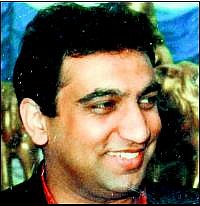 e)
e)
Karambir Singh lost his wife and two sons in the hotel when they were forced to barricade themselves inside a room on the 6th floor. They died from asphyxiation while hiding in the bathroom of their hotel residential suite. Karambir called his mom in Mohali, Kanwaljeet Kaur, to tell her what had happened. Her words, “Go save the others,” gave him the courage to help other hotel guests while his wife and children could not be reached.
It was, he said, his mother’s words of courage that prodded him to fight back after watching his world blow into smithereens in front of his eyes. “I got a call from Karambir and his voice was shaking,” his mother Kanwaljeet Kaur said, tears rolling down.”He told me that terrorists have entered the hotel and his family is stuck on the 6th floor and that he can’t save them. I just said, ‘You are a brave boy, go save the others.” [Times of India]
Karambir followed his mother’s advice and saved many guests at the hotel.
“He saved many amid firing and grenade explosions, but he could not reach the sixth floor where his family was trapped in their residential suite,” said Kamaljit. [Indian Express] Yet even after he learned of the death of his wife and children, the hotelier, originally from the Punjab, stayed at his post. On Saturday morning, when the final gunman holed-up in the landmark hotel was killed by commandos, Mr Kang was still working. Reports said that the hotel’s owner, the industrialist Ratan Tata, had to personally tell him to go home and be with his relatives. [The Independent]
Ardaas was held for Karambir’s wife and son at a gurdwara near their farmhouse in Kandala, Mohali. Outside of the gurdwara, the family installed a board where guests could pay tribute. Their message to the well-wishers was: “Now time has come to stand united and forget all differences, may it be political, ideological or religious to give a befitting reply to terrorism and those who perpetrate it.”
The last time I was in Punjab, I visited a gurdwara with a cousin of mine who was a one-time employee of the SGPC. 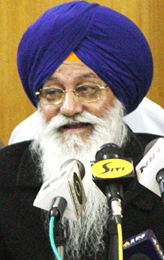 Upon receiving and tasting the karah parshad, I asked him why it was so coarse and dry compared what I was used to. He responded that it was now common practice for SGPC-controlled gurdwaras to use a lower quality, more unrefined type of flour, as this required less butter. But why would the gurdwara staff want to use less butter? To pocket the savings in the butter budget, of course.
Upon receiving and tasting the karah parshad, I asked him why it was so coarse and dry compared what I was used to. He responded that it was now common practice for SGPC-controlled gurdwaras to use a lower quality, more unrefined type of flour, as this required less butter. But why would the gurdwara staff want to use less butter? To pocket the savings in the butter budget, of course.
Sadly, not much surprises me about the SGPC anymore. A story out of the Tribune India this weekend reported the following account of 15 SGPC employees being fired.
The Shiromani Gurdwara Prabandhak Committee dismissed as many as 15 employees on the recommendation of the fact-finding committee, headed by general secretary Sukhdev Singh Bhaur.
Earlier, they were indicted for indulging in serious cases including corruption, addiction and moral turpitude. However, the SGPC has decided to review the cases of those who were found guilty of pilferage of ration from the Guru Ram Dass Langar and iron rods from store of Gurdwara Sultanpur Lodhi (Kapurthalla).
Among those who have been dismissed include Sukhvir Singh, a gurdwara inspector, SGPC, Sawinder Singh, posted at Gurdwara Jind, Ajit Singh (Gurdwara Bir Sahib), Devinder Singh (Darbar Sahib, Amritsar), Lakhwant Singh, Satnam Singh (Gurdwara Sukhchaina Sahib, Phagwara), Pargat Singh and Baldev Singh (Darbar Sahib), Balkar Singh (Gurdwara Tahliana, Raikot), Harjit Singh, Natha Singh and Dalbag Singh (Takht Kesgarh Sahib), Rachhpal Singh (Darbar Singh) and Tarsem Singh (Gurdwara Amb Sahib).
Talking to The Tribune, SGPC president Avtar Singh said the employees who were sacked were allegedly involved in theft/pilferage of ration, drug addiction and moral turpitude.
He said the SGPC was determined to weed out corruption and all sorts of evils from the committee.
The sub-committee, which recommended immediate dismissal of the employees, comprised Sukhdev Singh Bhaur, Gurbachan Singh Karmuwala, Bibi Bhajan Kaur Dograwala, both executive members, Baba Tek Singh, Makhan Singh Nangli, Kulowant Singh Mannan and Harbans Singh Kandhola. Earlier, the accused employees were placed under suspension, but they had applied for mercy appeal.
However, after scrutiny of the record, 22 employees were found to be guilty of various charges, while certain officials were let off for want of proof. It may be recalled that the SGPC had dismissed its two employees while two officials were suspended for bogus purchase of more than 10,000 cement bags by the SGPC by tampering with records.
In my last post, I argued that terrorists, by their actions, sever any legitimate relationship with a religion and any recognized sovereign, and as such terrorists should be identified as terrorists (e.g., “terrorists have invoked an interpretation of Islam to justify their actions”), even if the terrorists use religion or a disputed regional policy as a justification for their acts. Note that the focus of the proposition is identification of terrorists, and that its purpose was to suggest ways in which a backlash against all Muslims in India could be avoided.
This post generated a significant and spirited reaction. For example, some contended that my argument was typical of the left, of apologists, and of those who fail to understand the demonstrated link between Islam and terrorism. In response, and consistent with the fact that it’s exam time in classrooms and campuses across America, I ask the following:
Who made these statements:
“Ours is a war not against a religion, not against the Muslim faith. But ours is a war against individuals who absolutely hate what America stands for[.]”
“Americans understand we fight not a religion; ours is not a campaign against the Muslim faith. Ours is a campaign against evil.”
“The enemy of America is not our many Muslim friends; it is not our many Arab friends. Our enemy is a radical network of terrorists[.]”
“[T]he war against terrorism is not a war against Muslims, nor is it a war against Arabs. It’s a war against evil people who conduct crimes against innocent people.”
And the kicker:
This enemy tries to hide behind a peaceful faith. But those who celebrate the murder of innocent men, women and children have no religion, have no conscience and have no mercy.
The contents of an email from Tarlochan Singh, a member of the Indian Parliament, to Jagpal Singh Tiwana were published in The Sikh Times recently. 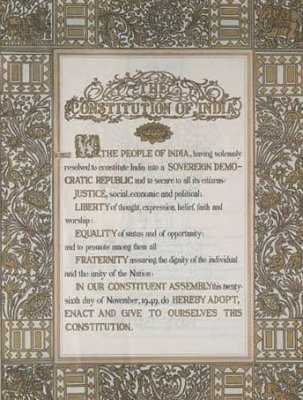 Apparently, the member of Parliament is trying to have the Indian Constitution amended so that Sikhs are no longer referred to as Hindus for the purposes of Article 25 (freedom of religion).
Apparently, the member of Parliament is trying to have the Indian Constitution amended so that Sikhs are no longer referred to as Hindus for the purposes of Article 25 (freedom of religion).
Dear S. Tiwana Ji,
When I became a Member of Parliament I moved a Private Members Bill for an amendment of Section 25 of the Indian Constitution such that the Sikhs are treated as an independent religion. Under the present Constitution Sikhs are regarded as part of the Hindus. So this amendment is required for getting us independent status. My bill came before the House for discussion twice but due to disturbances in the House no proceeding could take place. Now I am waiting for the next opportunity. [The Sikh Times]
Currently, freedom of religion in India’s Constitution (Article 25) reads as follows:
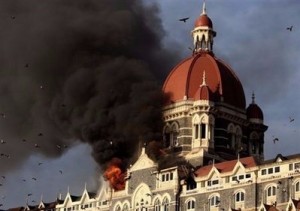 The terrorist attacks in Mumbai — which consisted of blasts in at least seven sites and which apparently targeted Westerners — have, as of this writing, claimed over 110 lives and injured a minimum of 300. Terrorism on this scale has the tendency to engender very common, basic reactions: fear of another attack, concern for those who are at or near the location(s) of the attacks, care for friends or family who may have loved ones affected, disbelief that one set of humans can do this to other humans, and an interest in why the terrorists did what they did. All these elements were present in the wake of 9/11 and the 7/7 bombings, and I believe have been resurrected again with the Mumbai attacks.
The terrorist attacks in Mumbai — which consisted of blasts in at least seven sites and which apparently targeted Westerners — have, as of this writing, claimed over 110 lives and injured a minimum of 300. Terrorism on this scale has the tendency to engender very common, basic reactions: fear of another attack, concern for those who are at or near the location(s) of the attacks, care for friends or family who may have loved ones affected, disbelief that one set of humans can do this to other humans, and an interest in why the terrorists did what they did. All these elements were present in the wake of 9/11 and the 7/7 bombings, and I believe have been resurrected again with the Mumbai attacks.
There is another aspect of a response to mass terrorism that I’d like to discuss in this post: the inclination to unfavorably treat those who share characteristics with or bear resemblance to the terrorists. Following 9/11 and 7/7, Muslims and those perceived to be Muslim were subject to a pervasive and violent backlash. (As we reported earlier this week, Sikhs in America have been profiled in the airport setting.) Accordingly, with news accounts suggesting that the Mumbai terrorists are Muslim, some are worried that Muslims in India may face a wave of public and/or private harassment and discrimination. For example, a colleague who heads a major civil rights organization in America expressed that he was “praying for victims of [the] Mumbai attack[s] and for Muslims in India.”
It should not have to be this way.
 My Nana Ji (maternal grandfather) often says: “Ja savair da bhulia, shaam noo ghar muriavye, ta oh nu bhulia nehee keheeda”. That if one is lost in the morning, but finds his way home by evening, he’s no longer lost. Hopefully that’s the case with Sikhs and their preservation of history and architecture.
My Nana Ji (maternal grandfather) often says: “Ja savair da bhulia, shaam noo ghar muriavye, ta oh nu bhulia nehee keheeda”. That if one is lost in the morning, but finds his way home by evening, he’s no longer lost. Hopefully that’s the case with Sikhs and their preservation of history and architecture.
Over the years, well-intentioned but individuals kar sewa babas took on the responsibility for the renovation and expansion of Sikh religious institutions across South Asia. Unfortunately, in almost every case, they lacked any expertise in preservation and caused way more harm then good. The result has been, literally, a whitewashing of Gurdwaras. With an “out with the old and in with the new” attitude, old historical structures have been torn down, modified beyond recognition and historical paintings and frescos have been painted or tiled over.
For me the most shocking example of this came from the Baba Atal tower in Amritsar, where hideous green bathroom tiles (that no self-respecting homeowner would ever use) were installed over top of century-old paintings. Here is pic that were sent my way a few years back.
Thankfully, someone has woken up to the fact that bathroom décor isn’t the best way to preserve our history for future generations.
The heritage experts engaged by the SGPC and the district administration have found priceless frescoes from the first floor of Baba Atal, the tallest building of Amritsar, hidden under bathroom tiles put up by Sikh Babas during previous kar sewa.
The art work is exquisite. Most of the art work, hidden during the kar sewa can be retrieved though it requires extra care and expertise. The experts are careful that further damage is not caused while removing marble or bathroom tiles.
Earlier, the SGPC had entrusted kar sewa to the Sikh Babas who had “destroyed” the Sikh heritage, much to the chagrin of experts. Deputy commissioner Kahan Singh Pannu today held a meeting with experts in the Golden Temple complex after monitoring the restoration work of Baba Atal and Ramgarhia Bungas.
Earlier, the kar sewa, carried out to repair age-old murals at Gurdwara Baba Atal, had earned flak from heritage lovers. Interior walls of the first floor were adorned with murals depicting Sikh history. About 100 panels of murals had been left on the first floor of the gurdwara, while the rest of them had been destroyed beyond recognition. Link
This is an area where the Sikh diaspora can have a direct impact. Most kar sewa efforts are highly dependent on dollars and pounds coming in from abroad. Before giving from your dasvand to these causes, please make sure and find out what the project is actually doing. The last thing anyone wants to further devastate the little physical we have left.
